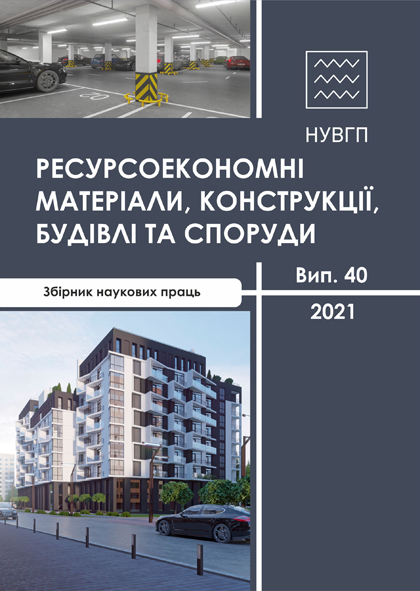WAYS TO INCREASE THE RIGIDITYS OF ELEMENTS FROM WHOLE AND GLUE WOOD WITH TRANSVERSE BENDING
DOI:
https://doi.org/10.31713/budres.v0i40.014Abstract
Abstract.On the basis of researches of work of beams from glued wood with the combined reinforcement the analysis of ways of increase of rigidity of the elements working on cross bending is carried out. The design of the beams provided for the improvement of glued wood elements by combined reinforcement. Reinforcement of the compressed zone of the element, as the weakest, to prevent the formation of folds, was carried out with steel rod reinforcement. Reinforcement of the stretched zone - by external tape reinforcement and tape prestressed reinforcement from high-strength composite materials.Due to the reinforcement of the beams in this way, and the analysis of their work, methods have been developed to increase the stiffness of elements made of solid or glued wood for resistance to their transverse bending. These techniques are based on the accepted "calculated cross section" and four stages of the stress-strain state of the element of wood working on the transverse bend.
New experimental data on the change of stiffness of glued wood beams due to the use of combined reinforcement are obtained. Based on the tests and comparative deflections of non-reinforced and reinforced beams with steel rod reinforcement glued to the grooves of the compressed zone and composite carbon fiber tape glued to the outside of the stretched zone.
Reinforcement of the compressed and stretched zone gives noticeable results. Therefore, for samples GRB-16A, GRB-16B with a reinforcement diameter of 16 mm in the compressed zone, the value of the deflection was achieved at a load, on average, 39% greater than for non-reinforced beams. However, it should be noted that the total bearing capacity of these samples was the largest. Samples with 12 mm reinforcement in the compressed zone showed higher rigidity. For them, the maximum deflection was achieved under load, which is 61% more than the average value for non-reinforced samples.
Due to the pre-tension of the Sika CarboDur S-512 tape in the beam with 12 mm reinforcement in the compressed zone, a bend f ’= 4.72 mm was created, due to which it doubled and became 16 kN • m.
It is urgent to continue systematic studies of the stiffness of glued wood beams under external loads and to obtain statistically reliable data to achieve the highest load-bearing capacity for the second group of limit states at different temperature and humidity operating conditions.

